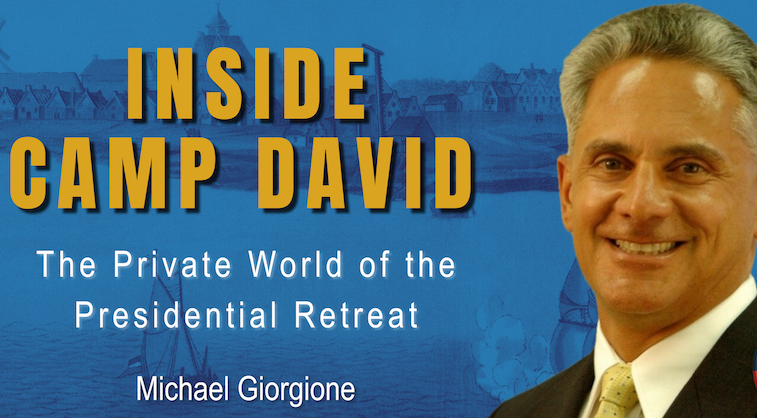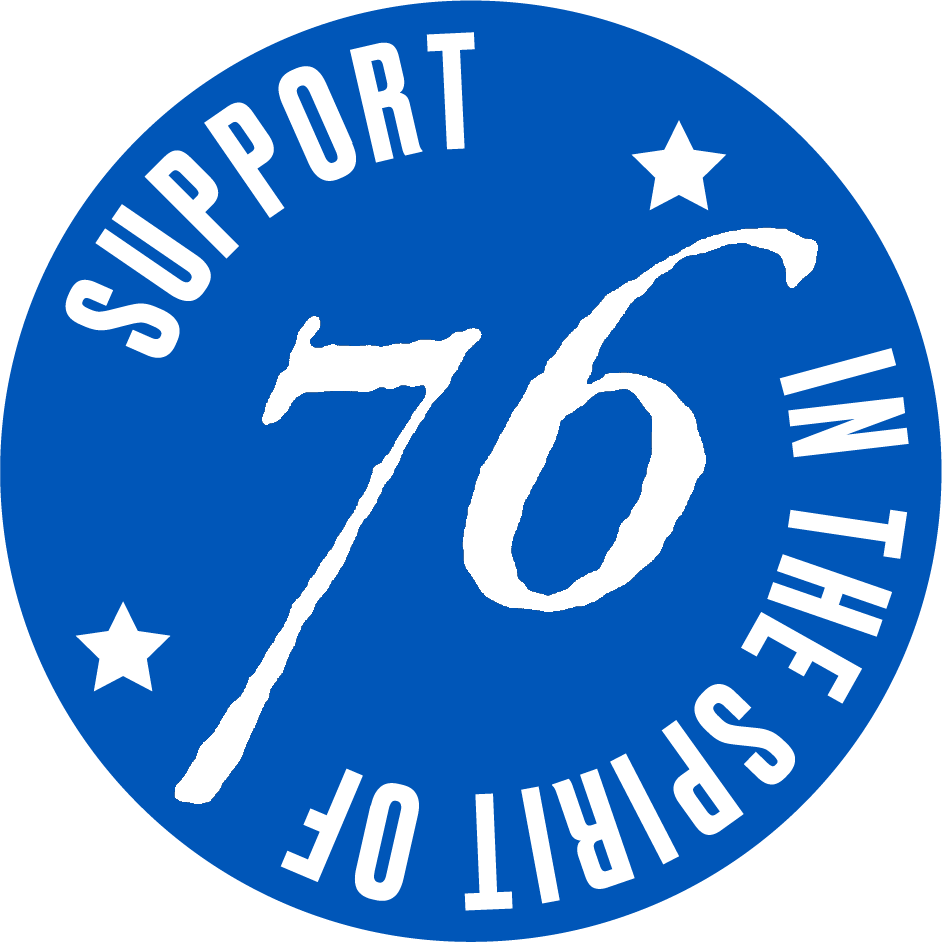Inside Camp David
October 29, 2025

Join The American Idea’s Listener Email list – get news about upcoming episodes and a chance to offer questions for them, too!
Seventy-five miles from the White House, nestled at 1,800 feet in the Catoctin Mountains of Maryland, sits one of the most consequential addresses in American political life. Camp David occupies just 200 acres, yet within its rustic cedar-shake cabins, presidents have found respite from crisis, brokered historic peace agreements, and conducted the intimate diplomacy that rarely survives the formality of the Oval Office.
The retreat’s origins trace to a peculiar wartime problem. Franklin Delano Roosevelt loved escaping Washington aboard the USS Potomac, the presidential yacht that sailors dubbed “the floating White House.” But by the early 1940s, U-boat sightings along the eastern seaboard made such excursions dangerous. Roosevelt’s staff delivered unwelcome news: the yacht was no longer safe. His response was characteristically direct. “Find me someplace I can go to get out of here.”
What they found was Camp Number Three, a collection of rustic cabins built by the Civilian Conservation Corps during the New Deal. The Navy sailors who piloted the Potomac presented Roosevelt with this site in the Catoctin National Park. When the president visited on July 5, 1942, his assessment was immediate. “This is it. This is my Shangri-La.” For the remainder of his presidency, Roosevelt used the retreat only in pleasant weather. The cabins lacked adequate heating, and accommodations remained spartan. But the isolation suited him perfectly.
Harry Truman showed little interest in Shangri-La, preferring the naval air station at Key West as his eastern retreat. The location’s fate remained uncertain until Dwight Eisenhower assumed office. Initially skeptical, Eisenhower was persuaded to preserve the camp, though on one condition: he would rename it. In 1953, Shangri-La became Camp David, after Eisenhower’s grandson. The general also systematized the nomenclature, renaming the main presidential cabin “Aspen” after Colorado’s state tree, a nod to his wife Mamie’s home state. Every cabin received the name of a tree, establishing a convention that persists today.
Eisenhower discovered what Roosevelt had intuited: Camp David offered something the White House could not. He installed a three-hole pitch and putt area behind Aspen, designed by Robert Trent Jones. More significantly, he began using the site for substantive diplomacy. In 1959, Nikita Khrushchev became the first Soviet premier to visit the United States. Eisenhower brought him to Camp David, testing whether the mountain setting might foster different conversations than formal Washington permitted.
Perhaps the most revealing photograph in Camp David’s history captures a moment from 1961. The image, titled “Serious Steps” and later awarded a Pulitzer Prize, shows John F. Kennedy walking the grounds with Eisenhower just weeks after the Bay of Pigs disaster. The young president had summoned the retired five-star general to ask a humbling question: How do I fix this? The scene embodies both Kennedy’s willingness to seek counsel and Camp David’s role as a space where such vulnerable exchanges could occur away from public scrutiny.
The retreat achieved global recognition in September 1978, when Jimmy Carter sequestered himself for thirteen days with Egyptian President Anwar Sadat and Israeli Prime Minister Menachem Begin. The Camp David Peace Accords emerged from those tense, exhausting negotiations, establishing the template for how presidents would use the location thereafter. Carter chose a smaller cabin called Holly for most discussions, deliberately creating physical intimacy that forced more personal conversation. The summit nearly collapsed multiple times, but the isolated setting prevented either leader from simply leaving.
Since 1978, “the aura of Camp David” has carried weight in international affairs. The phrase itself signals something distinct: not the grandeur of a state dinner or the theater of a Rose Garden ceremony, but the possibility of substantive work in an environment stripped of diplomatic pageantry. Presidents discovered they could invite world leaders into what amounts to their family room rather than the formal front parlor of the White House.
Ronald Reagan grasped this distinction more thoroughly than most. He visited Camp David more frequently than any president, often spending weekends there with Nancy Reagan. The couple found genuine refuge in the mountain retreat, and Reagan recorded many of his Saturday radio addresses from the back porch of Laurel, the entertainment cabin. He hosted Margaret Thatcher and Japanese Prime Minister Yasuhiro Nakasone there, but just as often, the Reagans simply retreated from Washington’s intensity.
The Bush family, both George H.W. and later George W., made Camp David integral to their presidencies in a different way. They spent every Christmas there, not at their more famous Kennebunkport compound. The tradition reflected a practical recognition: Camp David offered privacy and security without the logistical complications of moving the presidential apparatus to Maine. George W. Bush, who knew the property from childhood, visited nearly every weekend during his tenure, establishing a rhythm of retreat and return that sustained him through two terms.
What makes Camp David function is less visible than its history. The installation operates as a naval command, led by a Navy officer and staffed by handpicked handpicked Sailors. Personnel are trained to build and maintain infrastructure in demanding conditions. Marines from the 8th and I barracks in Washington provide security. Every sailor and Marine undergoes extensive background checks and security clearances, but technical competence alone does not guarantee selection.
The interview process seeks something harder to quantify: the right temperament for an isolated, high-stakes environment. Bringing together highly motivated, high-achieving personnel creates predictable friction. Everyone selected for Camp David has excelled in their career. Managing a camp full of “Type A” personalities, all accustomed to being the best, requires careful attention to morale and mission. The crew must maintain absolute readiness to receive the president, sometimes with only hours of notice, while also enduring long stretches when no visits occur.
Those lulls test everyone. During one five-month gap without presidential visits, maintaining crew focus and morale became the primary challenge. The mission is to host and serve, but when there is no one to host, the sense of purpose erodes. Leaders learned to fill the time productively while preserving the team’s edge for when it mattered.
When visits do occur, the operational complexity multiplies quickly. International guests require accommodation of diverse dietary restrictions and religious practices. The 2000 peace summit brought Israeli Prime Minister Ehud Barak and Palestinian leader Yasser Arafat to Camp David for two weeks. Navy cooks learned to prepare kosher meals. Prayer rugs appeared in cabins. All alcohol was removed from guest quarters. The chapel was arranged to feel ecumenical, with Torah scrolls and prayer spaces available. Every detail mattered because every detail carried symbolic weight.
Even landscaping became diplomatically sensitive. When you have four cabins and six golf carts, you need to ensure absolute equity. Deer posed the greatest ongoing challenge to groundskeeping, constantly eating fresh flowers planted before important visits. Eventually, the National Park Service removed the deer, solving one problem but creating another: an influx of chipmunks.
What emerges from eight decades of Camp David history is a portrait of the presidency’s human dimension. Presidents need what all people need: rest, privacy, and space to think without performance. They want to take naps, eat cheeseburgers, and occasionally do nothing. They bring their families, their pets, and their unguarded selves. Presidential dogs run loose, bounding into the commander’s residence and delighting his children. First families share personal moments that reveal their ordinary humanity.
Yet presidents at Camp David remain perpetually on duty. They receive briefings, make decisions, and carry the weight of office even in this secluded setting. The retreat offers relief from Washington’s intensity, not escape from responsibility. Understanding this duality requires recognizing the difference between being in someone’s world and being of their world. Those who serve at Camp David enter the presidential sphere briefly, witnessing history and humanity in equal measure, then return to their own lives knowing they occupied a unique space but were never truly part of it.
Camp David endures because it serves a need that transcends any single administration. The American presidency demands constant visibility, relentless decision-making, and the performance of power. But sustainable leadership requires periodic withdrawal from the demands of that performance. For more than eighty years, this modest collection of cabins in the Maryland mountains has provided American presidents with something irreplaceable: a place to be both leader and human, to conduct the nation’s most sensitive business while also simply being themselves.
Read Read Admiral (ret.) Michael Giorgione’s book, Inside Camp David, and get the full story from a former commander of the president’s private retreat.

